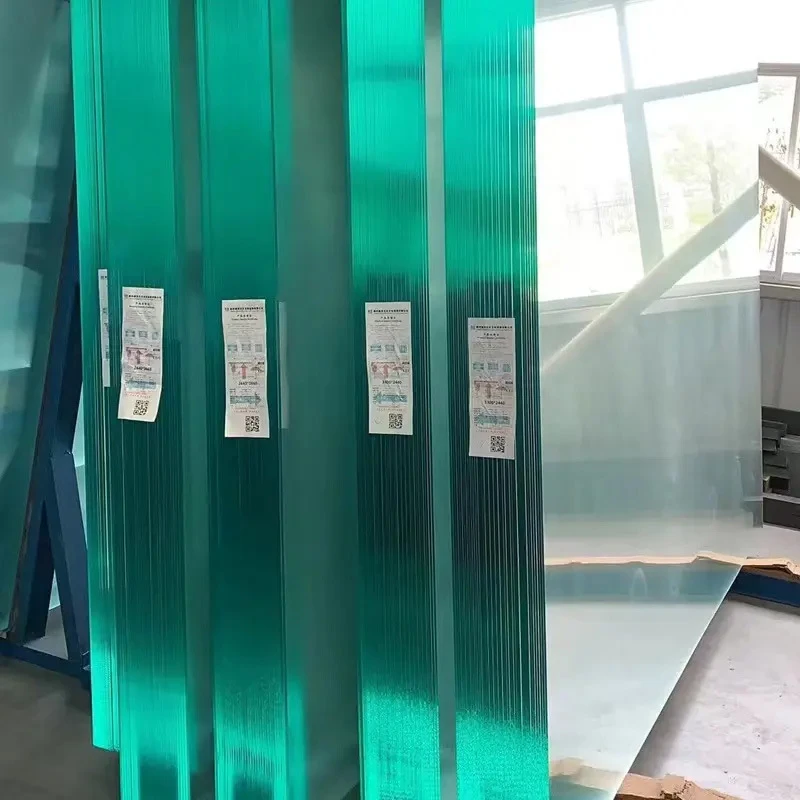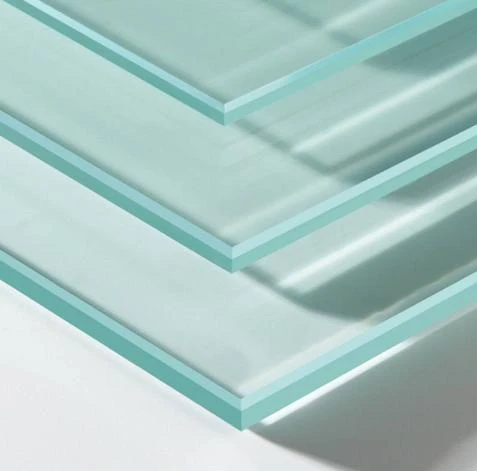Float glass, an architectural marvel, has revolutionized the world of design and construction. More than just a material, float glass embodies elegance, functionality, and infinite possibilities for creative expression. For anyone involved in design, architecture, or construction, understanding how to utilize float glass designs effectively can significantly enhance both aesthetic appeal and structural integrity.

Float glass is created through a process where molten glass is floated on a bed of molten tin, producing perfectly uniform sheets that are later cooled and polished. This method not only results in glass with exceptional clarity and smoothness but also allows for the production of large sheets that are ideal for a wide range of applications. Designers and architects benefit from its versatility, using it extensively in windows, doors, facades, and interior elements.
The beauty of float glass designs lies in their adaptability. Modern designers and architects integrate this element into their projects to craft spaces that blur the lines between interior and exterior environments. Given its transparency and reflectivity, float glass maximizes natural light, creating airy, vibrant spaces that feel open and connected to the outdoors. It offers a seamless transition from the interior to the exterior, fulfilling a growing demand for designs that harmonize with nature.

In terms of professional expertise, designers must consider several factors when incorporating float glass into their projects. The thickness of the glass, the types of coatings used, and the intended applications greatly impact the final design. For instance, thicker glass is essential for structural applications, ensuring durability and safety, while thinner glass may be used for decorative purposes. Expert designers often employ low-emissivity (Low-E) coatings, which enhance energy efficiency by reducing heat transfer while maintaining transparency.
Float glass is also prized for its ability to undergo various treatments and transformations, offering limitless design opportunities. Laminating, tempering, and tinting can enhance its functionality, making it suitable for safety applications or for adding aesthetic variety. For example, laminated float glass isn’t just stronger but also provides added security, as it holds together when shattered – an important consideration for both residential and commercial buildings.
float glass designs
Furthermore,
float glass can be enhanced with textures and patterns. Textured float glass designs create an exquisite interplay of light and shadow, adding depth and character to a space. Frosted or etched designs offer privacy without sacrificing natural light, making them ideal for both residential and office settings. This ability to customize makes float glass an invaluable tool for designers seeking to craft unique, captivating spaces.
Architectural experts have long trusted float glass for its structural benefits and its contribution to green building initiatives. Its exceptional clarity and light-transmitting qualities reduce the need for artificial lighting, lessening energy consumption. By selecting float glass that's manufactured with sustainability in mind, experts contribute to eco-friendly building practices.
Ultimately, float glass sits at the intersection of innovation and tradition, representing both the modern push towards minimalist design and the timeless beauty of simplicity. As industry standards evolve, the demand for sustainable and visually stunning materials like float glass continues to rise. Its role extends beyond aesthetics, providing functional benefits that contribute to a space’s comfort and efficiency.
For those looking to harness the potential of float glass, it is essential to collaborate with experienced manufacturers and craftsmen. Their expertise ensures that each sheet of glass meets the highest standards of quality and performance. Trusted sources are key to achieving designs that are not only beautiful but also durable and sustainable, establishing the foundation for environments that are both enriching and enduring.
In conclusion, float glass is more than just a building material; it is a dynamic medium that, when expertly applied, elevates any architectural space. Its adaptability, combined with modern advancements in processing and sustainability, makes it a crucial component of contemporary design practices. By embracing the potential of float glass designs, industry professionals unlock new realms of creativity and innovation, crafting spaces that inspire and endure.
 Afrikaans
Afrikaans  Albanian
Albanian  Amharic
Amharic  Arabic
Arabic  Armenian
Armenian  Azerbaijani
Azerbaijani  Basque
Basque  Belarusian
Belarusian  Bengali
Bengali  Bosnian
Bosnian  Bulgarian
Bulgarian  Catalan
Catalan  Cebuano
Cebuano  Corsican
Corsican  Croatian
Croatian  Czech
Czech  Danish
Danish  Dutch
Dutch  English
English  Esperanto
Esperanto  Estonian
Estonian  Finnish
Finnish  French
French  Frisian
Frisian  Galician
Galician  Georgian
Georgian  German
German  Greek
Greek  Gujarati
Gujarati  Haitian Creole
Haitian Creole  hausa
hausa  hawaiian
hawaiian  Hebrew
Hebrew  Hindi
Hindi  Miao
Miao  Hungarian
Hungarian  Icelandic
Icelandic  igbo
igbo  Indonesian
Indonesian  irish
irish  Italian
Italian  Japanese
Japanese  Javanese
Javanese  Kannada
Kannada  kazakh
kazakh  Khmer
Khmer  Rwandese
Rwandese  Korean
Korean  Kurdish
Kurdish  Kyrgyz
Kyrgyz  Lao
Lao  Latin
Latin  Latvian
Latvian  Lithuanian
Lithuanian  Luxembourgish
Luxembourgish  Macedonian
Macedonian  Malgashi
Malgashi  Malay
Malay  Malayalam
Malayalam  Maltese
Maltese  Maori
Maori  Marathi
Marathi  Mongolian
Mongolian  Myanmar
Myanmar  Nepali
Nepali  Norwegian
Norwegian  Norwegian
Norwegian  Occitan
Occitan  Pashto
Pashto  Persian
Persian  Polish
Polish  Portuguese
Portuguese  Punjabi
Punjabi  Romanian
Romanian  Russian
Russian  Samoan
Samoan  Scottish Gaelic
Scottish Gaelic  Serbian
Serbian  Sesotho
Sesotho  Shona
Shona  Sindhi
Sindhi  Sinhala
Sinhala  Slovak
Slovak  Slovenian
Slovenian  Somali
Somali  Spanish
Spanish  Sundanese
Sundanese  Swahili
Swahili  Swedish
Swedish  Tagalog
Tagalog  Tajik
Tajik  Tamil
Tamil  Tatar
Tatar  Telugu
Telugu  Thai
Thai  Turkish
Turkish  Turkmen
Turkmen  Ukrainian
Ukrainian  Urdu
Urdu  Uighur
Uighur  Uzbek
Uzbek  Vietnamese
Vietnamese  Welsh
Welsh  Bantu
Bantu  Yiddish
Yiddish  Yoruba
Yoruba  Zulu
Zulu 


